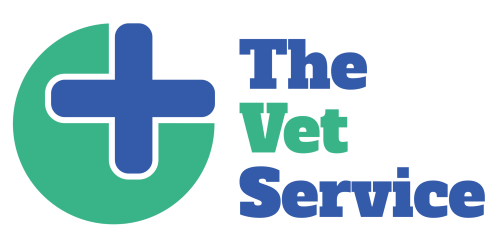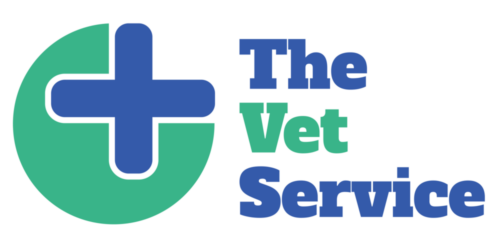By Rebecca MacMillan BVetMed BSAVA PGCertSAM MRCVS
Most vets establish their own style of communication over the years, with countless work-related interactions happening every day. This usually develops and evolves subconsciously but there may be a time in your career when you could do with a few pointers. Perhaps you are newly graduated, returning to work after a gap, lacking in confidence after a client complaint, or maybe you just want to refresh your skills. Whatever your circumstance, we’re going to look at some key points to consider when honing your communication techniques.
Your dream job is one step away! Simply register with us at The Vet Service today to explore different available options for your veterinary career, we have a large variety of permanent vet jobs, locum vet jobs, and graduate vet jobs available.


Communication with the team
Effective communication between vets, as well as the wider team, helps to keep the practice running like a well-oiled machine. Here are just a few of the key areas that you should pay particular attention to –
Clinical notes
It is important to communicate properly with the other people within your practice. A colleague who presses on with their own cases and works independently from the rest of their team can come unstuck. However, following your own cases and seeing your re-checks can never be guaranteed. The client may need to change days, or you could suddenly be off sick, which is why clinical notes are so important. Not only are they a record of the dog’s treatment, but they should allow your colleagues to be able to pick up the case and continue with it as needed.
Your notes should therefore be clear and logical. Many people use ‘SOAP’ to help organise their thoughts, as follows –
Subjective – Information from the client’s perspective (the history)
Objective – Matter-of-fact information such as temperature, heart rate and other details from the physical exam. Try and include normal findings as well as abnormal ones.
Assessment – Combining the information you know so far to help diagnose the problem. This section will help your colleagues know what you are thinking. It should include your differential diagnoses, or what tests you are thinking about doing to get to a conclusion.
Plan – Describes what is going to happen next. This includes medications prescribed, recommended follow-up appointments or tests and any dietary or exercise changes.
Terminology
Using correct terminology, in both verbal and written form, reduces ambiguity and allows colleagues to know exactly where and what the problem is.
Meetings and socials
Team meetings, both formal (with an agenda or minutes) and informal (e.g. the team getting together in the staff room for a tea break at a set time or going for a meal out) is vital. Most small animal practices are extremely busy places, and you can be lucky to snatch 2 minutes with a colleague between consults. That is why it is important to have an opportunity for a more extended catch-up. You can bounce ideas off each other for your cases, ensure practice protocols are understood and address any complaints together as a team. This all ensures that our obligation for clinical governance is being met.
A good team has a ‘no-blame’ culture, and everyone can feel free to openly discuss things with each other. This leads to fewer mistakes and better patient outcomes.


Messages
Make sure that your practice has a system to deal with messages from clients and repeat prescriptions. A written log on the computer system that everyone can see is usually the best way of dealing with this. If the intended vet is busy, it means another vet can follow it up if needed so that the client is kept happy.
Lab samples and case handover
The above also goes for things like lab samples. There should be a clear chain of communication from the sample arriving in the practice, to the nurse who needs to handle and process it, through to ensuring that it is sent to the lab (and not left in the fridge!).
Make sure that results are reported promptly. If you are going to be away, then flag this to a colleague who can report them on your behalf. Similarly handing over complicated cases in person is usually appreciated. If you know you are going to be on annual leave then chat with the vet who will be seeing your case in your absence, even if you have left clear clinical notes.
Communication with clients
Most complaints from clients arise from a communication issue. To try and head these off, remember the following –
Listen to the client
Take time to listen, especially when taking a history. Sometimes it’s easy to fire off a list of questions without listening to the answers or allowing the client some space to venture their thoughts. You never know what important piece of information you might miss.
Be understanding
Empathy goes a long way and will help put a worried client’s mind at ease. Make a fuss about their pet, sympathise with them, and try and relate to their situation. Don’t be too judgemental, especially when it comes to finances.
Informed consent
Owners must understand what they are agreeing to at all times. This means explaining both verbally and through written consent forms. Always remember to ask the client if they have any questions once you have finished explaining. Some owners won’t share their thoughts for fear of looking silly until you directly ask them.


Discuss finances
This always feels like a tough one, but it is important not to shy away from discussions around cost. You can give the best service in the world, but it will still leave a bad taste if the owner receives a large, unexpected bill at the front desk. Give owners the costs of the medication before dispensing them, try and print out estimates for operations and regularly update owners about the cost of their pet’s inpatient stay. If nothing else your receptionists will thank you!
Use straightforward language
While we know what an ‘exploratory laparotomy’ is, most clients won’t, so you should try and use everyday language. If you need to use the proper terminology, always follow it with an explanation. This goes for both verbal and written information.
Provide clear instructions
Clients can’t retain every single piece of information that was shared during a consultation. Always summarise at the end of your time together, focussing on what the owner needs to do at home and when you need to see the animal back. With medication, this involves telling them verbally and providing written instructions (a label on the drug, including explicit information on whether the medication is given by mouth or topically). You may also need to physically demonstrate some medications, such as drawing up the syringe and showing them exactly where 0.5ml is for example.
Provide further resources
Consults are often only 15 minutes long, so there may not be time to cover everything in the depth that you would like. Have a stock of leaflets or factsheets you can hand out for common conditions and medications. Directing owners towards reputable websites is also a good idea, as it saves them from straying into unregulated forums and blogs that may give incorrect advice.
Keep clear notes
As we discussed above, not only are the notes there to document the pet’s problem and treatment received, but they allow other vets to follow your treatment plan. This will help avoid client complaints and ensure a smooth transition between vets. Clear notes will also provide evidence should a complaint arise. If an owner has declined a treatment or referral that you have advised, then document this. Any phone calls or emails between you and the client should also be recorded.
Follow up
Re-examinations allow you to check the patient and ensure that instructions are being followed. Follow-up phone calls are also a good way of checking in and showing that you care. While it can be tricky to actively follow every case, always remind your client that they should contact you if they are worried.
Summary
Good communication is a vital part of being a vet and we have only scratched the surface here. If you feel like you would like to hone your skills further, then consider a training course which will also count towards your CPD.
The Vet Service offers continuing education for the veterinary industry on our education hub on our website. At a cost-effective price, you can become a global vet webinar member today!
Above all though, remember to be clear and honest with both your team members and clients, as this will lead to better outcomes in patient outcomes.
Don’t forget to connect with us today to explore how The Vet Service can help you take the next step in your veterinary career. We provide vet jobs worldwide, including International Vet Jobs, Vet Jobs in The USA, Vet Jobs in Australia, Vet Jobs in New Zealand, Vet Jobs in Canada, Vet Jobs in the UK, and Vet Jobs in Ireland. What are you waiting on?


